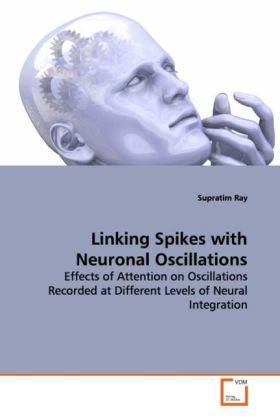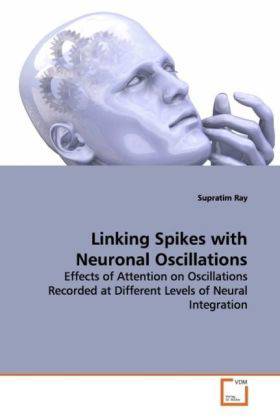
- Afhalen na 1 uur in een winkel met voorraad
- Gratis thuislevering in België vanaf € 30
- Ruim aanbod met 7 miljoen producten
- Afhalen na 1 uur in een winkel met voorraad
- Gratis thuislevering in België vanaf € 30
- Ruim aanbod met 7 miljoen producten
Zoeken
Omschrijving
The amount of information our sensory systems send to the brain far exceeds its processing capacity. To cope with this constant barrage of information, our brain has developed the remarkable ability to select only the inputs that are behaviorally interesting and relevant, while filtering out irrelevant stimuli. These attentional mechanisms have been associated with oscillatory activity in neural populations (for example, in EEG recordings). However, it is not known how these network oscillations in the brain are related to firing properties of neurons. This book attempts to link the neural firing properties with oscillations observed in small as well as large neural populations, both in humans and monkeys. Establishing such links are key to understanding higher order cognitive functions such as attention, multi-sensory integration, working memory, and consciousness. This book will be of interest to anyone interested in understanding the relationship between neural signals at various levels, especially neurophysiologists and clinicians studying the functional role of oscillations (in gamma and high-gamma range) and theoretical scientists interested in rate versus temporal coding.
Specificaties
Betrokkenen
- Auteur(s):
- Uitgeverij:
Inhoud
- Aantal bladzijden:
- 124
- Taal:
- Engels
Eigenschappen
- Productcode (EAN):
- 9783639097986
- Verschijningsdatum:
- 6/11/2008
- Uitvoering:
- Paperback
- Formaat:
- Trade paperback (VS)
- Afmetingen:
- 152 mm x 229 mm
- Gewicht:
- 176 g

Alleen bij Standaard Boekhandel
+ 116 punten op je klantenkaart van Standaard Boekhandel
Beoordelingen
We publiceren alleen reviews die voldoen aan de voorwaarden voor reviews. Bekijk onze voorwaarden voor reviews.











